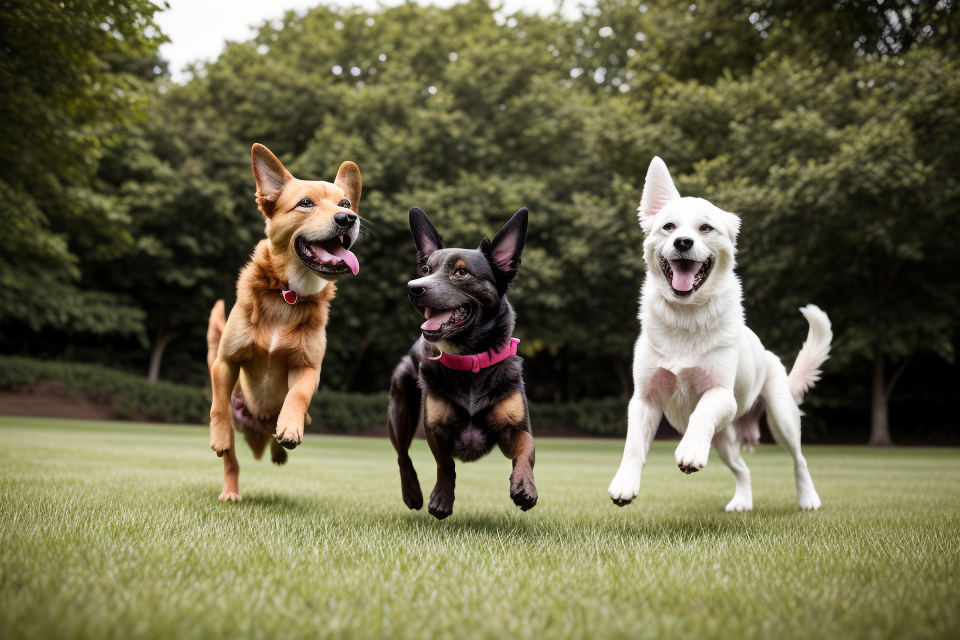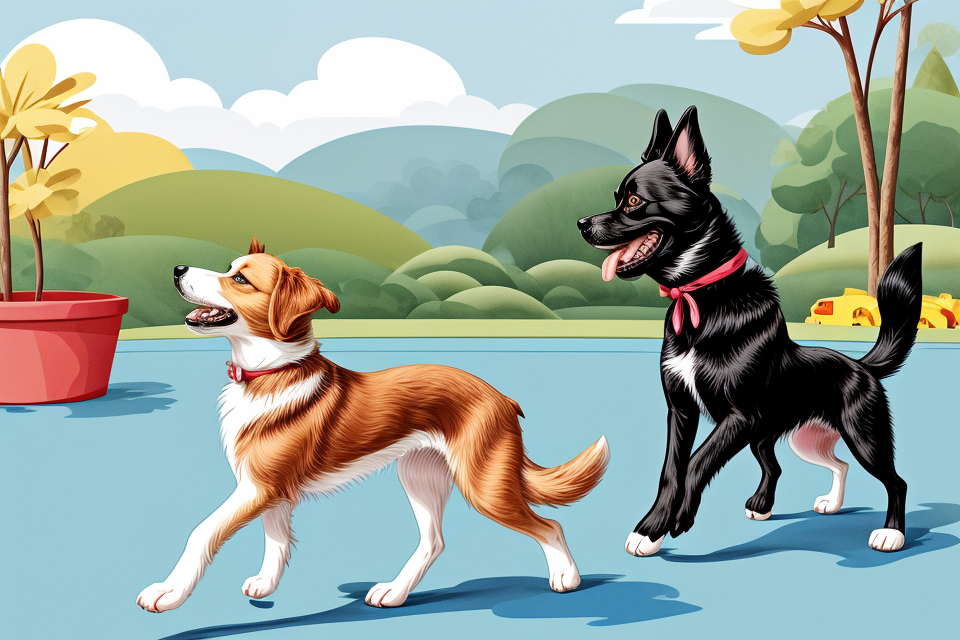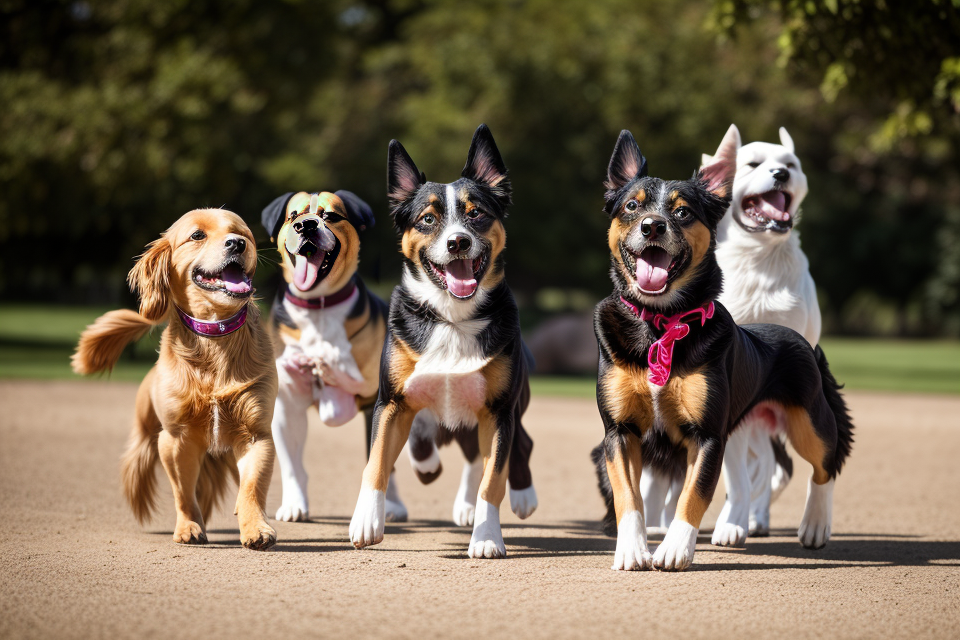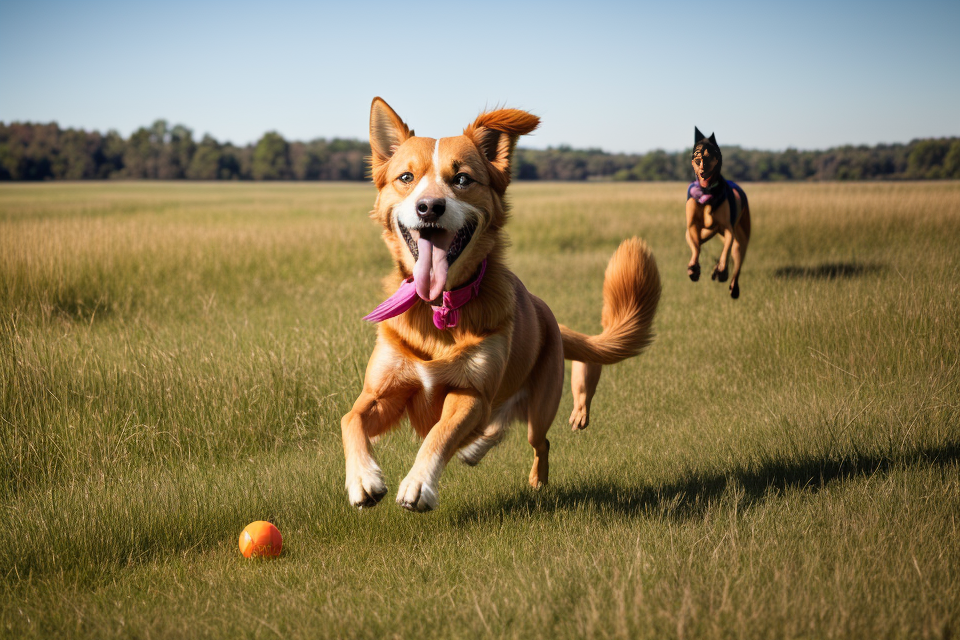Do you remember the first time you heard a squeaky toy being squeezed by a playful pup? The high-pitched sound of the squeaker and the uncontrollable laughter of the owner, as the dog goes berserk with excitement, is a scene that many of us are familiar with. But have you ever wondered why dogs love squeaky toys so much? Is it just because they enjoy the sound, or is there something more to it? In this article, we will explore the reasons why squeaky toys might not be the best choice for our furry friends, and why it might be time to reconsider giving them as gifts. So, sit back, relax, and let’s dive into the world of dog toys.
Squeaky toys for dogs have been a popular choice for pet owners for years, but recent research suggests that they may not be as beneficial for our furry friends as we once thought. Some experts argue that squeaky toys can actually cause more harm than good, as they can lead to aggression and anxiety in dogs. Additionally, the small parts inside the toys can be easily swallowed and pose a choking hazard. On the other hand, some dogs enjoy the sound and excitement of squeaky toys and they can provide some mental stimulation. Ultimately, it’s up to the pet owner to decide whether or not to reconsider squeaky toys for their dog, based on their individual needs and behavior.
The Hazards of Squeaky Toys for Dogs
The Potential Dangers of Squeaky Toys
Squeaky toys are a popular choice among dog owners as they are entertaining for dogs and can help satisfy their natural instinct to hunt and play with prey. However, these toys can also pose a number of potential dangers to dogs.
- Foreign Object Ingestion: The small, soft fabric used in squeaky toys can easily be ingested by dogs, leading to blockages in their digestive system. This can be particularly dangerous for smaller dogs or dogs with existing health issues.
- Injury: The small, hard plastic used in the squeaker can easily break off and be ingested by dogs, leading to injury or blockages.
- Bacterial Contamination: Squeaky toys can harbor harmful bacteria, such as Salmonella and E. coli, which can be harmful to dogs if ingested.
- Toxic Materials: Some squeaky toys are made with toxic materials, such as lead or cadmium, which can be harmful to dogs if ingested.
- Choking Hazard: The small parts of squeaky toys, such as the squeaker, can pose a choking hazard to dogs if ingested.
Overall, while squeaky toys can be a fun and engaging choice for dogs, it is important for dog owners to be aware of the potential dangers they pose and to take steps to minimize the risk of harm to their pets.
How Squeaky Toys Can Harm Your Dog
Squeaky toys, a popular choice among dog owners, have been a staple in the pet industry for years. They are designed to be entertaining and provide dogs with mental stimulation. However, recent studies have shown that these toys can pose serious health risks to dogs. In this section, we will discuss the potential dangers of squeaky toys and how they can harm your dog.
- Foreign Object Ingestion: The small parts and squeakers inside squeaky toys can easily break off and become lodged in a dog’s digestive system, causing blockages or other serious health issues.
- Injury: Sharp edges or points on squeaky toys can cause cuts and lacerations to a dog’s mouth or digestive tract, leading to pain and discomfort.
- Toxicity: Some squeaky toys are made with toxic materials, such as lead or cadmium, which can be harmful to dogs if ingested.
- Dental Health: Squeaky toys are often made of soft materials that can be easily chewed and swallowed, which can lead to dental problems and gum disease in dogs.
- Noise Levels: Squeaky toys can be very loud, which can cause stress and anxiety for some dogs, especially those that are sensitive to noise.
Overall, while squeaky toys may seem like a harmless form of entertainment for dogs, they can pose serious health risks. It is important for dog owners to be aware of these potential dangers and to take steps to ensure their dog’s safety when playing with squeaky toys.
Alternatives to Squeaky Toys
Soft and Safe Toys for Chewing
When it comes to providing your furry friend with toys to chew on, there are plenty of alternatives to squeaky toys that are just as fun and engaging. Here are some options to consider:
- Soft and Plush Toys: These toys are made from soft materials like fleece, plush, or rope, and they are perfect for dogs who like to chew. They are gentle on your dog’s teeth and gums, and they are easy to clean. Some popular brands include the “Kong” line of toys, “West Paw’s Zogoflex”, and “Planet Dog’s Orbee-Tuff”.
- Interactive Toys: These toys are designed to provide mental stimulation and physical exercise for your dog. They can be filled with treats or peanut butter to make them more enticing. Some examples include the “Nina Ottosson’s Puzzle Toys”, “Outward Hound’s Hide A Squirrel”, and “Chewy Tube”.
- Toys with Dispensing Toys: These toys have a compartment that can be filled with treats or peanut butter, and they can be opened by your dog using their mouth or paws. They are designed to slow down eating and promote longer play sessions. Examples include the “Kong Wobbler” and “Dental Chew Dispensing Toy”.
- Rope Toys: Rope toys are a great option for dogs who like to chew, as they are durable and can be stuffed with treats or peanut butter. They come in different sizes and materials, and they can be easily cleaned. Some popular brands include “Nylabone Rope Bone” and “West Paw’s Zogoflex Hurley”.
- Hard Toys: Hard toys are made from materials like rubber, plastic, or metal, and they are perfect for dogs who like to chew. They are durable and can be easily cleaned, and they come in different shapes and sizes. Some popular brands include “Kong’s Black Diamond”, “Chuckit! Ultra Rubber Ball”, and “Nylabone’s Power Chew”.
By providing your dog with a variety of soft and safe toys for chewing, you can encourage healthy chewing habits and prevent the destruction of household items. It’s important to choose toys that are appropriate for your dog’s size and chewing style, and to monitor their playtime to ensure their safety.
Toys That Promote Mental Stimulation
Dogs are intelligent creatures that need mental stimulation to keep them happy and healthy. While squeaky toys may provide some entertainment, they are not the only option for dogs. There are many other types of toys that can promote mental stimulation and provide a more satisfying experience for dogs. Here are some examples:
- Interactive Toys: Interactive toys, such as puzzle toys and hide-and-seek toys, challenge dogs to use their problem-solving skills and provide them with a sense of accomplishment when they figure out how to retrieve a hidden treat or toy.
- Scent Work Toys: Scent work toys, such as scent kongs and snuffle mats, challenge dogs to use their sense of smell to find hidden treats or toys. This type of toy is great for dogs that love to use their nose and can be used to provide mental stimulation and enrichment.
- Toy Dispensing Toys: Toy dispensing toys, such as the “Fruit puzzle toy” and the “Squirrel puzzle toy”, challenge dogs to figure out how to get the toy or treat out of the dispenser. These toys provide dogs with a sense of accomplishment when they figure out how to get the treat or toy out of the dispenser.
- Environmental Enrichment: Environmental enrichment is the process of adding items to the dog’s environment to provide mental stimulation and enrichment. This can include adding objects for dogs to investigate, providing hiding places, and rotating toys and treats to keep things interesting.
By providing dogs with a variety of toys that promote mental stimulation, owners can help to keep their dogs happy and healthy, and prevent boredom and destructive behavior.
Training Your Dog to Play Safely
The Importance of Training
Proper training is crucial when it comes to ensuring that your dog plays safely with squeaky toys. Here are some reasons why:
- Prevents injuries: Dogs, especially puppies, tend to be very enthusiastic when playing with toys. This enthusiasm can sometimes lead to accidents, such as swallowing parts of the toy or injuring themselves while biting or shaking the toy. Training your dog to play safely with squeaky toys can help prevent these accidents.
- Encourages good behavior: Training your dog to play safely with squeaky toys also encourages good behavior. For example, teaching your dog to drop the toy when you say so can help prevent aggression and possession issues among dogs.
- Improves bonding: Training your dog to play safely with squeaky toys can also improve your bond with your dog. It allows you to communicate with your dog and teach them what is acceptable behavior, which can strengthen your relationship.
- Helps with problem-solving: Training your dog to play safely with squeaky toys can also help with problem-solving. For example, if your dog is aggressive when playing with other dogs, training can help you teach them how to share and play nicely.
Overall, the importance of training your dog to play safely with squeaky toys cannot be overstated. It can help prevent injuries, encourage good behavior, improve bonding, and help with problem-solving.
Techniques for Teaching Safe Play
Training your dog to play safely with squeaky toys is essential to prevent injuries and promote positive behavior. Here are some techniques to help you teach your dog to play safely:
1. Supervise Playtime
Supervising your dog during playtime is the first step in teaching safe play. You should monitor your dog’s behavior and intervene if they become aggressive or show signs of aggression. It’s important to supervise playtime to prevent accidents and ensure that your dog is playing safely.
2. Introduce Toys Gradually
Introducing squeaky toys gradually is also an effective technique for teaching safe play. Start by introducing the toy when your dog is calm and relaxed. You can then gradually increase the level of excitement and challenge, such as by adding more toys or increasing the distance between you and your dog.
3. Use Positive Reinforcement
Positive reinforcement is a powerful tool for teaching safe play. When your dog plays with a squeaky toy safely, praise them and reward them with treats or playtime. This reinforces good behavior and encourages your dog to continue playing safely.
4. Encourage Alternative Behaviors
Encouraging alternative behaviors is another technique for teaching safe play. Instead of allowing your dog to play with squeaky toys, you can encourage them to engage in other activities, such as fetch or tug-of-war. This helps to redirect their energy and focus and can reduce the likelihood of aggression.
5. Teach Leave It
Teaching your dog to “leave it” is also an important technique for teaching safe play. This command helps your dog to release the toy when you ask them to and can prevent injuries or damage to the toy. You can teach your dog to “leave it” by gradually increasing the distance between you and the toy and reinforcing good behavior with treats or playtime.
By using these techniques, you can help your dog learn to play safely with squeaky toys and prevent injuries or aggression. It’s important to be patient and consistent in your training, and to supervise playtime at all times to ensure your dog’s safety.
Understanding Your Dog’s Playing Style
Tailoring Toys to Your Dog’s Personality
When it comes to selecting toys for your furry friend, it’s important to consider their individual playing style and personality. By taking this approach, you can ensure that your dog is engaged, happy, and satisfied with their playtime activities. Here are some tips for tailoring toys to your dog’s personality:
Active vs. Relaxed Players
Dogs can be categorized as either active or relaxed players. Active players are energetic and enjoy toys that provide mental and physical stimulation, such as interactive puzzle toys or fetch toys. Relaxed players, on the other hand, may prefer simpler toys that they can carry around or chew on. Consider your dog’s energy level and play style when selecting toys for them.
Prey Drive
Dogs with a strong prey drive may be more interested in toys that resemble small animals, such as squeaky toys or stuffed animals. However, it’s important to supervise these dogs during playtime to prevent them from becoming too aggressive or destructive. For dogs with a lower prey drive, toys that promote other forms of play, such as tug-of-war or fetch, may be more appealing.
Sensory Needs
Some dogs have sensory needs that can affect their play preferences. For example, dogs with anxiety or stress may benefit from toys that provide tactile or auditory stimulation, such as chew toys or toys with different textures. Dogs with hearing or vision impairments may prefer toys that are easy to manipulate or have distinct tactile or olfactory characteristics.
Individual Differences
It’s important to remember that every dog is unique and may have their own preferences when it comes to toys. Some dogs may enjoy a variety of toys, while others may have specific favorites. Pay attention to your dog’s body language and behavior during playtime to get a better understanding of their preferences.
By taking these factors into account, you can create a toy collection that is tailored to your dog’s individual needs and preferences. This will help ensure that your dog is engaged and happy during playtime, and will prevent boredom and frustration.
Monitoring Your Dog’s Toy Selection
Keeping a Close Eye on Your Dog’s Toys
It is important to monitor your dog’s toy selection, especially when it comes to squeaky toys. While these toys may be entertaining for your dog, they can also pose a potential danger to their health. Here are some tips for keeping a close eye on your dog‘s toys:
- Check for wear and tear: Squeaky toys can quickly become worn and damaged, which can lead to small parts breaking off and potentially being ingested by your dog. Make sure to regularly check your dog’s toys for any signs of wear and tear, and discard any toys that are showing significant signs of damage.
- Keep an eye on your dog’s play: Pay attention to how your dog is playing with their toys, and intervene if necessary. If your dog is biting or chewing on their toys in a way that could potentially harm them, take the toy away and provide an alternative.
- Rotate toy selection: To prevent your dog from becoming bored with their toys, it’s a good idea to rotate their selection. This means providing a variety of different toys for your dog to play with, and removing any toys that have been in rotation for a while.
- Consider alternative toys: If you’re concerned about the potential dangers of squeaky toys, consider providing alternative toys for your dog to play with. There are many different types of dog toys available, including interactive toys, chew toys, and more.
By keeping a close eye on your dog‘s toy selection and being mindful of the potential dangers of squeaky toys, you can help ensure that your dog stays safe and healthy.
Addressing Signs of Distress or Discomfort
As responsible dog owners, it is essential to monitor our furry friends’ toy selection to ensure they are having fun without experiencing any discomfort or distress. Squeaky toys, in particular, have been known to cause issues for some dogs. Here are some signs to look out for when assessing your dog’s toy selection:
- Whining or yelping while playing with the toy
- Dropping the toy and avoiding it
- Pawing at the face or rubbing the eyes after playing with the toy
- Excessive salivation or panting while playing with the toy
- Destroying the toy in an attempt to get to the squeaker
If you notice any of these signs, it may be time to reconsider your dog’s squeaky toys and explore alternative options. It is always better to err on the side of caution and prioritize your dog’s comfort and well-being.
The Bottom Line on Squeaky Toys
Weighing the Pros and Cons
When it comes to choosing toys for dogs, squeaky toys are a popular option. They are affordable, easily accessible, and many dogs find them irresistible. However, there are also some potential downsides to consider.
Pros:
- Affordable: Squeaky toys are generally inexpensive, making them a great option for dog owners on a budget.
- Accessible: Squeaky toys are widely available at pet stores, online retailers, and even dollar stores.
- Entertaining: Many dogs love the sound of the squeaker and enjoy trying to remove it from the toy.
Cons:
- Durability: Squeaky toys are often made of soft materials that can easily be torn apart by a determined dog.
- Noise: The constant squeaking can be annoying to some dog owners, and may even be a nuisance for neighbors.
- Potential health hazards: Some squeaky toys contain small parts, such as the squeaker itself, which can pose a choking hazard for dogs.
Overall, the decision to give your dog a squeaky toy will depend on your individual circumstances and your dog’s preferences. While they can be a fun and affordable option, it’s important to weigh the pros and cons before making a purchase.
Making an Informed Decision for Your Dog
When it comes to choosing toys for your furry friend, it’s important to consider their safety and well-being. Squeaky toys have been a popular choice among dog owners for years, but recent studies have raised concerns about the potential dangers they pose.
One of the main concerns with squeaky toys is the potential for them to cause injury to your dog’s mouth and teeth. The small, hard plastic pellets that are often used in the toys can become lodged between your dog’s teeth, causing pain and potentially leading to infection. Additionally, the noise generated by the squeaker can be so loud that it can cause hearing damage in some dogs.
Another issue with squeaky toys is the potential for them to be swallowed. If your dog manages to get the squeaker out of the toy, it can pose a choking hazard or become lodged in their digestive system, requiring costly surgery to remove.
So, what can you do to make an informed decision for your dog? First, consider your dog’s age and size. Puppies and small dogs may be more susceptible to injury from squeaky toys, so it’s important to supervise their playtime and choose toys that are appropriate for their size and strength.
Second, look for toys made from durable, non-toxic materials that are designed to withstand the chewing and biting of even the strongest dogs. Rubber and rope toys are great alternatives to squeaky toys, as they are gentle on your dog’s mouth and teeth and can be easily cleaned.
Finally, talk to your veterinarian about the best options for your dog. They can help you make an informed decision based on your dog’s individual needs and health history.
In conclusion, while squeaky toys may be a fun and affordable option for some dog owners, it’s important to consider the potential risks they pose. By making an informed decision and choosing toys that are safe and appropriate for your dog, you can help ensure their continued health and happiness.
FAQs
1. Why shouldn’t dogs have squeaky toys?
Dogs should not have squeaky toys because the noise they make can be very irritating and stressful for them. The high-pitched sound of a squeaky toy can cause dogs to become anxious and agitated, especially if they are already feeling stressed or overwhelmed. In addition, the noise can be so loud that it can interfere with a dog’s ability to sleep or relax.
2. Is it true that squeaky toys can damage a dog’s hearing?
There is no evidence to suggest that squeaky toys can damage a dog’s hearing. However, it is important to note that some dogs may be more sensitive to noise than others, and the loud sound of a squeaky toy could potentially cause discomfort or distress. It is always a good idea to monitor your dog’s reaction to any toy or sound and to stop using it if it seems to be causing them any problems.
3. What types of toys are best for dogs?
There are many different types of toys that are suitable for dogs, including plush toys, rubber toys, rope toys, and interactive toys. The best type of toy for your dog will depend on their age, size, and play style. For example, younger dogs may enjoy chewing on plush toys, while older dogs may prefer toys that they can play fetch with or that offer a challenge, such as interactive puzzle toys.
4. Can dogs play with squeaky toys if I remove the squeaker?
Yes, dogs can still play with squeaky toys if you remove the squeaker. However, it is important to supervise your dog when they are playing with any toy, as they can potentially break their teeth or swallow small pieces if they play too roughly. If you do choose to remove the squeaker from a squeaky toy, be sure to check it for any other small parts before giving it to your dog.



